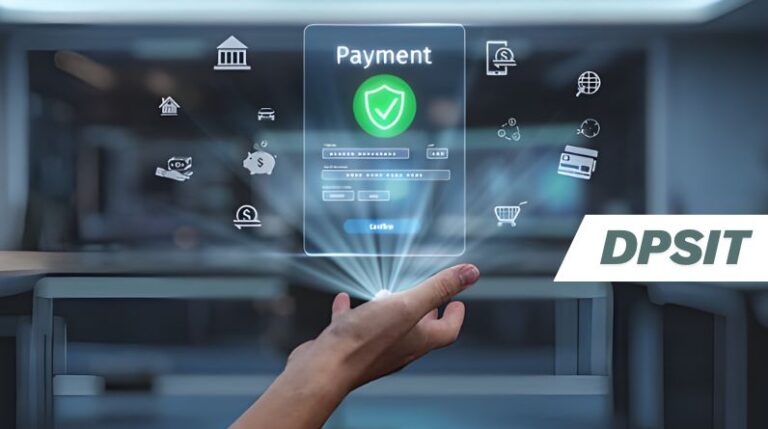In an era where digital transactions surpass $5 trillion annually, the security of online payments has never been more critical. Yet many businesses and consumers remain unaware of the technology protecting their financial data: DPSIT.
DPSIT, or Digital Payment Security & IT, represents far more than just encryption algorithms or security protocols. It’s a comprehensive framework that has quietly become the backbone of modern commerce, connecting technological innovation, regulatory compliance, and business trust into a unified defense system.
This guide explores DPSIT from a fresh perspective—not merely as a technical requirement, but as the essential bridge between digital commerce and consumer confidence.
Understanding DPSIT: Beyond the Technical Definition
What DPSIT Really Means
While DPSIT stands for Digital Payment Security & IT, the acronym barely captures its true scope. Think of DPSIT as the orchestrated symphony of technologies, processes, and policies that work together to create a safe digital payment environment.
Unlike traditional security measures that operated in isolation, DPSIT integrates multiple layers:
- Technical Infrastructure – Encryption, firewalls, and authentication systems
- Behavioral Analysis – Real-time monitoring and pattern recognition
- Regulatory Frameworks – Compliance with PCI-DSS, GDPR, and emerging standards
- Organizational Processes – Incident response, employee training, and continuous improvement
Why DPSIT Isn’t Just Another Security Buzzword
The digital payment landscape has fundamentally changed. In 2015, online fraud cost businesses $21.5 billion. Today, that figure has more than doubled, and sophisticated attacks have evolved exponentially.
DPSIT exists because conventional security approaches—firewalls, password policies, basic encryption—are no longer sufficient. Modern cybercriminals use artificial intelligence, supply chain infiltration, and social engineering tactics that traditional defenses simply cannot address.
The Four Pillars of DPSIT Security
Pillar 1: Encryption – Making Data Unreadable
Encryption remains the foundational pillar of DPSIT. When you enter your credit card number at checkout, encryption converts that sensitive information into indecipherable code that only authorized parties can decode.
Real-world example: A customer purchases from an e-commerce site using their Visa card. The moment they click “submit,” encryption scrambles the 16-digit card number, CVV, and expiration date. Even if a hacker intercepts this data mid-transmission, they receive useless encrypted strings rather than usable card information.
Pillar 2: Authentication – Verifying Identity
Authentication ensures that both parties in a transaction are genuinely who they claim to be. Multi-factor authentication (MFA) has become the gold standard, requiring multiple verification methods before payment processing.
Common authentication methods:
- Password + security question
- Biometric scanning (fingerprint, facial recognition)
- One-time verification codes via SMS or authenticator apps
- Device fingerprinting and behavioral analysis
Pillar 3: Real-Time Monitoring – Catching Threats Before Damage Occurs
Perhaps the most innovative DPSIT component, real-time monitoring analyzes transactions against historical patterns and behavioral baselines. Machine learning algorithms examine dozens of data points in milliseconds.
What real-time monitoring detects:
- Unusual transaction amounts
- Transactions from unexpected geographic locations
- Multiple failed payment attempts
- Rapid-fire purchases across multiple merchants
- Deviations from established spending patterns
Pillar 4: Tokenization – Replacing Sensitive Data
Tokenization represents a paradigm shift in payment security. Rather than storing actual card numbers, systems store unique tokens that represent the card. These tokens have absolutely no value outside their original transaction context.
Why tokenization matters: If a database containing tokens is breached, attackers obtain worthless symbols rather than exploitable financial information. This fundamentally changes the risk calculus for both businesses and cybercriminals.
The Business Case for DPSIT Implementation
For E-Commerce Retailers
E-commerce businesses face a critical paradox: customers demand seamless checkout experiences, yet security is non-negotiable. DPSIT enables this balance.
Retailers implementing comprehensive DPSIT frameworks report:
- 50-70% reduction in fraudulent transactions
- Improved customer retention and repeat purchase rates
- Lower chargeback percentages and associated costs
- Reduced PCI-DSS compliance audit findings
For Financial Institutions
Banks and payment processors shoulder enormous responsibility. A single security breach can expose millions of customer records and trigger regulatory penalties exceeding $10 million.
DPSIT implementation protects these organizations by:
- Preventing unauthorized account access
- Detecting money laundering patterns
- Flagging identity theft attempts in real-time
- Maintaining regulatory compliance across jurisdictions
For Consumers
The consumer benefit is straightforward: shopping online becomes safer and more trustworthy. DPSIT-protected transactions provide genuine protection against fraud, identity theft, and financial loss.
DPSIT Across Industries: Beyond Payment Processing
Healthcare: Protecting Patient Data
Healthcare organizations process sensitive patient information alongside payment data. DPSIT principles secure both simultaneously, ensuring HIPAA compliance while protecting billing information.
Government and Public Services
Government agencies use DPSIT to protect citizen data during license renewals, tax filings, and benefit applications. These applications handle enormous volumes of sensitive personal information.
Subscription and SaaS Businesses
Services using recurring billing—from Netflix to software platforms—depend on DPSIT to process millions of automatic payments daily without fraud or security incidents.
Common Threats DPSIT Defends Against
| Threat Type | Attack Method | How DPSIT Protects |
|---|---|---|
| Phishing | Fraudulent emails/texts directing users to fake payment sites | Multi-factor authentication makes stolen credentials less useful |
| Man-in-the-Middle | Intercepting communication between user and payment processor | Encryption and certificate validation prevent data capture |
| Malware | Keystroke logging and screen capture on user devices | Real-time monitoring flags suspicious transaction patterns |
| Data Breaches | Database infiltration exposing customer records | Tokenization and encryption limit value of stolen data |
| API Exploits | Unauthorized access through application programming interfaces | Continuous testing and API security protocols prevent exploitation |
| Account Takeover | Using stolen credentials to access customer accounts | Behavioral analysis detects unusual account activity |
Implementing DPSIT: A Practical Roadmap

Step 1: Conduct Comprehensive Security Assessment
Before implementing DPSIT, organizations must understand their current security posture. This involves auditing:
- How customer data flows through systems
- Which systems access payment information
- Existing vulnerabilities and weak points
- Current compliance status against relevant standards
Step 2: Select Appropriate Technology and Platforms
Organizations choose payment processors and platforms with robust DPSIT certification. This might involve replacing legacy systems or integrating middleware that enforces security requirements.
Step 3: Establish Clear Policies and Procedures
Written policies create accountability. These should address:
- Data handling protocols
- Access control procedures
- Incident response procedures
- Employee responsibilities and conduct standards
Step 4: Invest in Employee Training
Technical systems alone cannot prevent all threats. Employee education prevents phishing, ensures proper data handling, and builds a security-conscious culture.
Step 5: Implement Continuous Monitoring
DPSIT implementation doesn’t end with initial deployment. Continuous monitoring, regular security audits, and vulnerability testing should become ongoing organizational practices.
The Evolution of DPSIT: Emerging Technologies and Trends
Artificial Intelligence and Machine Learning
AI now powers DPSIT’s most effective fraud detection systems. Machine learning algorithms analyze transaction patterns across billions of data points, identifying anomalies that human analysts would miss.
Blockchain and Decentralized Security
Blockchain technology offers potential for decentralized payment verification, creating transparent and tamper-proof transaction records.
Biometric Authentication Advancement
Fingerprint, facial recognition, and voice authentication are becoming mainstream payment verification methods, replacing passwords and security questions.
Quantum-Resistant Encryption
Security experts are developing encryption standards resistant to quantum computing threats, ensuring DPSIT remains effective against future computational capabilities.
DPSIT vs. Traditional Security: A Clear Distinction
| Aspect | Traditional Security | DPSIT |
|---|---|---|
| Defense Approach | Static, perimeter-focused | Dynamic, layered, continuous |
| Threat Detection | Reactive, manual review | Proactive, real-time AI analysis |
| Update Frequency | Annual or sporadic | Continuous, patch-as-needed |
| Compliance | Basic standards | Comprehensive, globally aligned |
| Adaptability | Limited to existing architecture | Evolves with emerging threats |
Challenges in DPSIT Implementation
Cost Barriers for Small Businesses
Advanced DPSIT systems require significant investment. Small businesses may struggle to afford enterprise-level security solutions, creating vulnerability in the ecosystem.
Complexity Across Jurisdictions
International businesses must navigate varying compliance requirements across different countries—PCI-DSS in one region, GDPR in Europe, different standards in Asia-Pacific.
The Constant Evolution of Threats
Cybercriminals continuously develop new attack methods. DPSIT systems must evolve equally fast to remain effective, requiring constant investment and expertise.
FAQ: Essential DPSIT Questions Answered
Q: Is DPSIT only relevant to large enterprises?
A: No. Any business processing digital payments or handling customer data benefits from DPSIT principles. Small businesses can implement DPSIT through payment processors and cloud-based security services.
Q: How does DPSIT differ from PCI-DSS compliance?
A: PCI-DSS is a regulatory standard. DPSIT is a comprehensive framework that exceeds PCI-DSS minimum requirements and includes emerging best practices.
Q: Can DPSIT prevent all payment fraud?
A: No system prevents 100% of fraud. DPSIT significantly reduces risk and catches most attacks rapidly, but combined with user awareness, it provides robust protection.
Q: How often should DPSIT systems be updated?
A: Continuously. Security patches deploy when vulnerabilities are discovered. Comprehensive reviews should occur annually minimum.
Conclusion: DPSIT as the Foundation of Digital Trust
DPSIT represents far more than a collection of security technologies. It’s the infrastructure enabling billions of daily transactions with confidence. It protects consumer finances, builds business reputation, and supports the digital economy’s continued growth.
As cyber threats evolve and digital commerce expands—particularly in developing nations—DPSIT becomes increasingly central to organizational success. Companies prioritizing DPSIT implementation today position themselves not just for security, but for competitive advantage and customer loyalty.
The digital economy’s future depends on trust. DPSIT provides the technical, organizational, and procedural framework making that trust genuine and justified.


